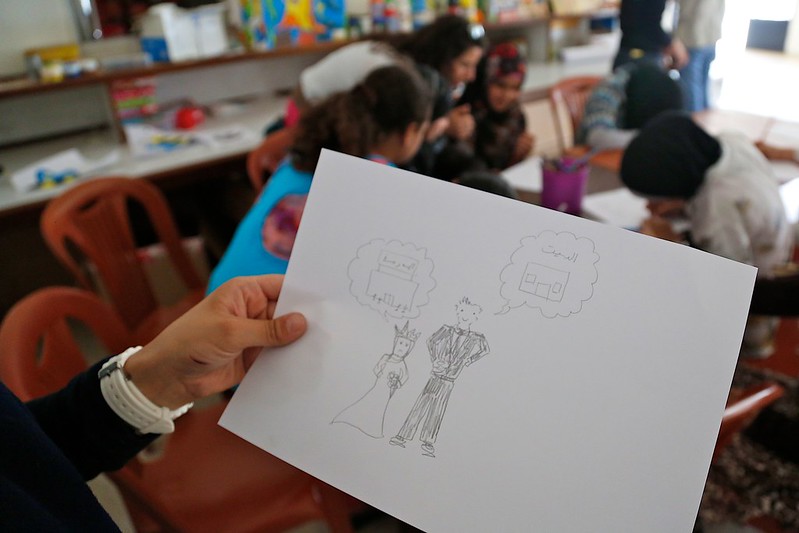Child Marriage in Lebanon
 In Lebanon, 20% of girls are victims of child marriage. In 2017, UNICEF published a regional study on child marriage in Lebanon, reporting that the percentage of child marriage in the country varies with nationality. The study reported that 6% of the victims were Lebanese, 12% were Palestinian refugees from Lebanon, 25% were Palestinian refugees from Syria and 40.5% were Syrian refugees. The unstable political situation in the Middle East has made Lebanon a focal point for refugees who also become victims of child marriage.
In Lebanon, 20% of girls are victims of child marriage. In 2017, UNICEF published a regional study on child marriage in Lebanon, reporting that the percentage of child marriage in the country varies with nationality. The study reported that 6% of the victims were Lebanese, 12% were Palestinian refugees from Lebanon, 25% were Palestinian refugees from Syria and 40.5% were Syrian refugees. The unstable political situation in the Middle East has made Lebanon a focal point for refugees who also become victims of child marriage.
Poverty and Child Marriage
Poverty affects 44% of the population in Lebanon. Between 2019 and 2021, the GDP per capita in Lebanon fell by 36.5%. In addition, The World Bank re-classified Lebanon from an upper-middle-income to a lower-middle-income country in July 2022. With unemployment hitting 300,000 individuals and a great increase in the intake of refugees, the rate of child marriage has seen growth, according to UNICEF.
Conflict causing a large refugee intake strained the Lebanese infrastructure and finances, resulting in refugees finding themselves undocumented and finding a solution in child marriage.
Those who live in Lebanon have also seen a rise in prices for their most basic needs, with inflation increasing by 200% since 2019, according to Anera. This results in many Lebanese, also non-refugees, having to marry off their daughters to survive.
The COVID-19 pandemic has also led to an increase in child marriage in Lebanon. Since the beginning of the pandemic, up to 10 more million girls worldwide are at risk of being victims of child marriage in the next decade. With school closures during the pandemic, the probability of child marriage could be 25% higher.
A Change Is Possible
UNICEF report shows that an approach to education can change the perception of child marriage. The report shows that 62.3% of girls who go to school are against child marriage, followed by 45% of girls who dropped out and 37.2% of girls with no education.
This demonstrates that there is a relationship between child marriage and education. Therefore, an increase in political pressure on educational policies in Lebanon and the Middle East could have a positive impact by reducing the cases of child marriage.
Lebanon does not have a personal status law that regulates issues like the legal marriage age. Instead, 18 different religious groups are regulating this issue, according to DW. In December 2020, The Sunni Supreme Islamic Council approved raising the minimum age for marriage to 18. Likewise, between November 2020 and December of the same year, Shiite Muslim religious authorities claimed to raise the minimum age of marriage to 15, DW reports.
A Structural Approach
ABAAD is an organization that fights for gender equality in the Middle East and North Africa (MENA) region. ABAAD collaborated with Queens University to study what factors affect child marriage, aiming to obtain through data collection an understanding of why child marriage happens and how its cause(s) can be intersectional.
The study targeted different groups, ranging from mothers of victims of child marriage to community leaders and as was known previously, showed that some of the root causes of child marriage are education, political situations, instability and poverty.
ABAAD’s study, however, also provided a conclusion that is central to future strategies to prevent child marriage in Lebanon. The results demonstrated that female and male participants responded differently to the causes of child marriage, showing that the approach is gendered. From this, ABAAD concluded that future strategies, therefore, can target groups who have a differentiated opinion and aim to shift this gendered narrative. Such as challenging the gendered male narrative of being responsible for a family’s income.
Different factors affect the situation of child marriage in Lebanon. This is seen in how child marriage ranges with nationality, with studies demonstrating that education can impact the approach to child marriage, proving how its perception ranges with different societal groups.
Child Marriage in Lebanon therefore has multiple intersectional causes. With progress from the religious communities and organizations such as ABAAD that target these root causes, one can see a slow but positive shift.
– Daniela Maldonado
Daniela is based in London, UK and focuses on Politics for The Borgen Project.
Photo: Flickr
